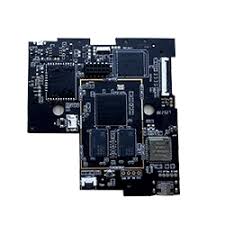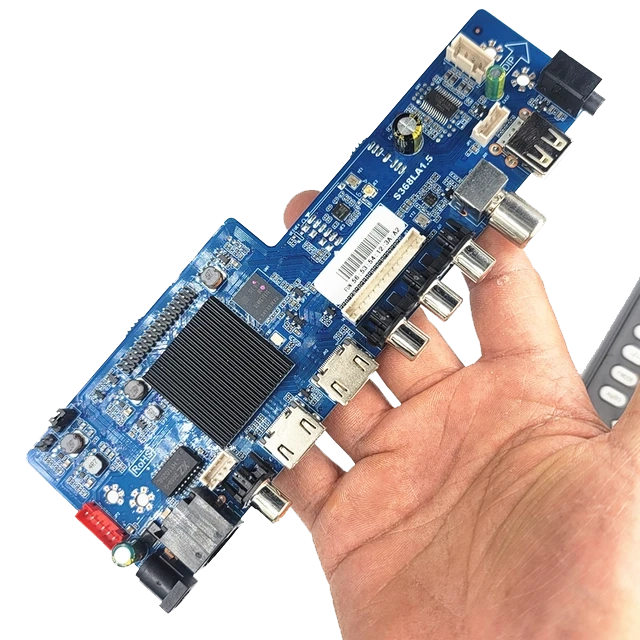
Venture into the field of mobile app programming for microcontroller boards. This comprehensive guide will grant you the fundamental insights and operational guidelines to skillfully craft your own Android-driven SBC projects. From comprehending essential theories of Android development to investigating elaborate world of SBC hardware, this guide will direct you to a rewarding engineering venture.
- Research the wide range of available SBC systems and their respective capabilities.
- Excel in essential Android programming utilities, including Android Studio, SDKs, and emulators.
- Become familiar with the intricacies of configuring your SBC workspace for seamless Android processing.
Scrutinize best practices for designing robust and high-performing Android software tailored for SBC hardware constraints.
Producing Android Applications on SBCs
Exploiting strengths of a Single Board Computer (SBC) for Android application development is an increasingly prevailing approach. These compact and versatile devices provide a cost-effective solution for innovation, enabling developers to utilize the capabilities of Android without the need for a traditional desktop. By applying the SBC's resources such as its processor, memory, and connectivity options, developers can formulate Android applications that range from simple utilities to more complex systems. The skill to customize the hardware and software environment further magnifies the flexibility of SBCs for Android development, making them a effective tool for both enthusiasts.
Advancing IoT Projects with Android Boards
For budding developers delving into the world of Internet of Things (IoT), Android dev boards present a robust platform to bring their pioneering ideas to life. These miniature boards, often equipped with multifunctional hardware and easy-to-use software development kits (SDKs), provide a stable foundation for implementing a wide range of IoT tools. From home control systems to manufacturing monitoring devices, Android dev boards empower collectives to develop cutting-edge IoT projects with facility.
- Exploiting the extensive Android ecosystem, developers can connect with a vast library of resources specifically designed for IoT services. This range of resources allows for enhanced development and boosts the creation of sophisticated IoT solutions.
- Furthermore, Android dev boards often feature built-in connectivity options such as Wi-Fi, Bluetooth, and cellular, facilitating seamless data exchange with other devices and cloud platforms. This connectivity capability is crucial for enabling real-time data processing and remote monitoring of IoT systems.
- Finally, the shared frameworks of Android dev boards fosters a thriving ecosystem of developers, providing ample backing for tackling any challenges encountered during the development process.
Scrutinizing Multimedia Potentials of Android SBCs
The sphere of multimedia applications is constantly advancing, pushing the boundaries of what's attainable. In this dynamic landscape, Android System-on-Chips (SBCs) have emerged as a versatile choice for developers seeking to formulate innovative and engaging experiences.
These compact yet capable SBCs offer a rare blend of processing force, connectivity, and multimedia functions that make them perfect for a far-reaching collection of applications.
Regarding high-definition video playback to real-time audio processing, Android SBCs are geared to handle the demands of today's multimedia milieu.
- In addition, their open-source nature allows developers to modify hardware and software to conform to specific application prerequisites.
- The described level of versatility allows for developers to expand the limits of multimedia innovation.
Go Beyond Defaults with Android Dev Boards
A development board namely the Raspberry Pi or specific Nexus Player empowers a unique opportunity to adapt your Android experience. By manipulating with the underlying hardware, you can reshape everything from the kernel to chosen components. This level of governance allows innovators to experiment and design truly personalized Android ecosystems. Whether you're seeking to improve your device's performance, research new possibilities, or simply address your curiosity, a dev board can offer a world of avenues.
- Master the fundamentals of Android development
- Construct custom ROMs and kernels
- Analyze new apps and features
- Combine your device to other hardware
Diagnosing Android SBC Challenges
When working with Android development on Single Board Computers (SBCs), you might encounter a variety of challenges. These can range from simple configuration errors to complex software bugs. Effective debugging and troubleshooting are crucial for identifying the root cause of these problems and restoring your Android environment to full functionality. Leverage the vast resources available online, such as forums and documentation, to gain insights into common issues faced by other developers in similar setups.
Start by carefully reviewing your event logs for any error messages or warnings that might provide clues about the problem. Use a thorough logging strategy within your Android application to capture relevant information during runtime. This can help pinpoint specific areas where errors are occurring. Don't hesitate to try different configurations and settings to see how they affect the behavior of your system.
- Devote time in understanding the hardware capabilities of your SBC, as limitations in processing power or memory can contribute to Android performance issues.
- Build a strong understanding of the Android SDK and its tools to effectively debug your applications.
- Stay updated with the latest launches of both Android and your SBC's firmware, as these often include bug fixes and performance improvements.
Enhancing SBC Android Efficiency
When operating Android-based SOC embedded boards, maximizing speed is paramount. To achieve this, developers and engineers can leverage a array of approaches. This involves thoroughly optimizing software and hardware components to confirm seamless responsiveness. Key areas for boost include resource distribution, power consumption, network connectivity, and application responsiveness.
- Focusing on real-time task management is essential for applications that demand immediate answers.
- Utilizing lightweight libraries can greatly reduce memory footprint, thereby boosting overall output.
Regularly enhancing the Android operating system and applications is essential for addressing security exploits and obtaining stability refinements.
Applying Security Measures to Android SBCs
Securing your Android units against threats is paramount. Adopting sound security best practices for your Android System-on-a-Chip (SBC) procedure can significantly mitigate risks. Regularly renew your SBC's software to address vulnerabilities. Configure robust access controls to limit user permissions and network access. Conduct ongoing security surveys to identify potential concerns and enforce necessary fixes.
- Coach your users about common security threats and best practices for protecting their devices.
- Secure sensitive data at rest and in transit using strong mechanisms.
By adhering to these best practices, you can create a more secure environment for your Android SBC.
Applying Advanced Methods in Android SBC Development
The world of embedded Hardware (SBCs) provides a compelling platform for developing innovative Android applications. By fusing the power of Android with the unique capabilities of SBCs, developers can create complex solutions across diverse disciplines. This approach offers incomparable flexibility and customization options, advancing the development of tailored applications that cater to specific conditions. Whether it's for smart home gadgets, SBCs coupled with Android development open up a myriad range of possibilities.
- Employing the low-power nature of SBCs for resource-constrained environments.
- Building Android applications with on-demand responsiveness for time-sensitive tasks.
- Merging Android's user interface capabilities with custom hardware peripherals for a smooth experience.
The combination of Android and SBCs empowers developers to push the limits of innovation, resulting transformative applications that reshape various fields.
The Future of Android Development: SBCs Take Center Stage
The environment of Android development is rapidly evolving, with Single Board Computers (SBCs) emerging as a prominent force. These compact and versatile instruments offer developers a powerful platform for experimentation, prototyping, and even full-scale application deployment. With their affordability, expandability, and growing ecosystems, SBCs are poised to refashion the way we develop Android applications. Builders are enthusiastically embracing this advanced paradigm, unlocking a world of possibilities for creating exciting user experiences.
From embedded platforms to networked devices, SBCs provide the perfect cornerstone for a wide range of Android projects. Employing the power of open-source software and hardware, developers can design innovative solutions that tackle real-world challenges.
Suggested Android SBC Developments
Android Single Board Computers (SBCs) are effective little gadgets that can be used to form a wide range of projects. Since you're a novice, there are plenty of captivating project ideas to explore. One mainstream category is home automation, where you can use an Android SBC to manage your appliances. You could also build a specialized media center, stream content on a larger screen, or even experiment with robotics and software development.
- Various sbc for android Certain Multiple Several
- A few other ideas include developing educational equipment, manufacturing wearable gear, or even collaborating on open-source software. The possibilities are truly unlimited.
